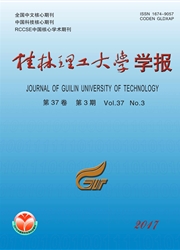

 中文摘要:
中文摘要:
根据水岩反应理论,通过围岩与蚀变岩的对比分析,利用图解法求取惰性元素,对八卦庙金矿千枚岩在矿化蚀变过程中元素的迁移规律进行探讨。研究表明,在金矿化蚀变过程中,不同元素的带入带出程度不同,迁移规律明显:重稀土元素均为带出元素,成矿元素和亲硫元素均为带入,顺层脉旁蚀变岩的Au、Ag带入量明显低于节理脉旁蚀变岩;但Cu、Pb的带入量则相反,表明热液蚀变早期形成的顺层脉主要偏向铜铅锌元素富集,而晚期节理脉主要形成金矿化;Bi元素异常高的带入量,可能暗示八卦庙金矿床成矿与深源物质的带入以及深部岩浆活动有内在联系。
 英文摘要:
英文摘要:
According to the water-rock reaction theory,through the comparative analysis of surrounding rocks and altered rocks,and seeking inert element by the graphic method,the elements migration study covers the phyllite process of mineralization and alteration in Baguamiao gold deposit. It is shown that various elements are carried in and out at different degrees in the process of gold mineralization and alteration,The element migration rule is obvious. All heavy rare-earth elements were carried-out ones. The ore forming elements and parent sulfur elements are carried-in ones. The quantity of Au,Ag in the altered rocks beside the bedded veins is lower than that in the altered rocks beside the jointed veins,but the situations of Cu and Pb are on the contrary. It is indicated that copper and lead-zinc elements are mainly concentrated in the early hydrothermal alteration period with the formation of bedded veins. However,the gold mineralization is mainly accompanying with the formation of jointing vein in the later period. It suggests that the mineralization has inherent connection with deep materials and magmatic activity by carried-in Bi of abnormally high content in Baguamiao gold deposit.
 同期刊论文项目
同期刊论文项目
 同项目期刊论文
同项目期刊论文
 期刊信息
期刊信息
